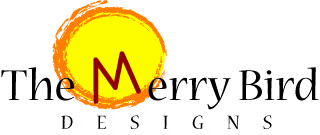
Put your networking circle to work for you with these 15 guaranteed ways to generate new business.
By Ivan Misner
Has anyone ever said to you, "If there's anything I can do to help you with your business, let me know"? Did you respond, "Thank you. Now that you mention it, there are a few things I need"? Or did you say, "Well, thanks, I'll let you know"?If you're like most of us, you aren't prepared to accept help at the moment it's offered. You let opportunity slip by because you haven't given enough thought to the kinds of help you need. You haven't made the connection between specific items or services you need and the people who can supply them. But when help is offered, it's to your advantage to be prepared and to respond by stating a specific need.Systematic referral marketing requires that you determine, as precisely as possible, the types of help you want and need. There are many ways your sources can help you promote yourself and your business and generate leads and referrals; we've chosen to discuss fifteen of them. Some are simple, cheap and quick; others are complex, costly and time-consuming.
1. Display your literature and products. Your sources can exhibit your marketing materials and products in their offices or homes. If these items are displayed well, such as on a counter or a bulletin board, visitors will ask questions about them or read the information. Some may take your promotional materials and display them in other places, increasing your visibility.
2. Distribute information. Your sources can help you distribute your marketing information and materials. For example, they can include a flyer in their mailings or hand out flyers at meetings they attend. A dry cleaner attaches a coupon from the hair salon next door to each plastic bag he uses to cover his customers' clothing; a grocery store includes other businesses' marketing literature in or on its grocery bags or on the back of the printed receipt.
3. Make an announcement. When attending meetings or speaking to groups, your sources can increase your visibility by announcing an event you are involved in or a sale your business is conducting, or by setting up exhibits of your products or services. They can also invite you to make an announcement yourself.
4. Invite you to attend events. Workshops and seminars are opportunities to increase your skills, knowledge, visibility and contacts. Members of personal or business groups that you don't belong to can invite you to their events and programs. This gives you an opportunity to meet prospective sources and clients.
5. Endorse your products and services. By telling others what they've gained from using your products or services or by endorsing you in presentations or informal conversations, your network sources can encourage others to use your products or services. If they sing your praises on audiotape or videotape, so much the better.
6. Nominate you for recognition and awards. Business professionals and community members often are recognized for outstanding service to their profession or community. If you've donated time or materials to a worthy cause, your sources can nominate you for service awards. You increase your visibility both by serving and by receiving the award in a public expression of thanks. Your sources can pass the word of your recognition by word of mouth or in writing. They can even create an award, such as Vendor of the Month, to honor your achievement.
7. Provide you with leads. A source can help you by passing along information she hears about someone who needs the kind of product or service you provide. Following through on such leads--for example, a rumor about a new company moving into the area or a news item about the troubles another business is having--could result in new business.
8. Provide you with referrals. The kind of support you'd most like to get from your sources is, of course, referrals--names and contact information for specific individuals who need your products and services. Sources can also help by giving prospects your name and number. As the number of referrals you receive increases, so does your potential for increasing the percentage of your business generated through referrals.
9. Make initial contact with prospects and sources. Rather than just giving you the telephone number and address of an important prospect, a network member can phone or meet the prospect first and tell him about you. When you make contact with the prospect, he will be expecting to hear from you and will know something about you.
10. Introduce you to prospects. Your source can help you build new relationships faster by introducing you in person. She can provide you with key information about the prospect. She can also tell the prospect a few things about you, your business, how the two of you met, some of the things you and the prospect have in common, and the value of your products and services.
11. Arrange a meeting on your behalf. When one of your sources tells you about a person you should meet, someone you consider a key contact, she can help you immensely by coordinating a meeting. Ideally, she will not only call the contact and set a specific date, time and location for the meeting, but she will also attend the meeting with you.
12. Follow up with referrals they have given you. Your sources can contact prospects they referred to you to see how things went after your first meeting, answer their questions or concerns, and reassure them that you can be trusted. They can also give you valuable feedback about yourself and your products or service, information that you might not have been able to get on your own.
13. Publish information for you. Network members may be able to get information about you and your business printed in publications they subscribe to and in which they have some input or influence. For example, a source who belongs to an association that publishes a newsletter might help you get an article published or persuade the editor to run a story about you.
14. Serve as a sponsor. Some of your sources may be willing to fund or sponsor a program or event you are hosting. They might let you use a meeting room, lend you equipment, authorize you to use their organization's name, or donate money or other resources.
15. Sell your products and services. Of all the kinds of support that a source can offer, the one that has the greatest immediate impact on your bottom line is selling your product or service for you. Your network member could persuade a prospect to write a check for your product, then have you mail or deliver the product to your new customer. If you do so swiftly and cordially, you may gain a new lifelong customer.Suppose a customer you know well tells you a friend of his wants to buy your product. How should you respond? By telling him to have his friend contact you? By asking for information about the friend? The correct answer is neither. While your interest is still hot, let your friend, the customer, take your product and sell it to his friend, the prospect (if he plans to see his friend in the near future, of course).
Editor's note: This article is excerpted from Business by Referral http://www.amazon.co.uk/Business-Referral-Ivan-R-Misner/dp/188516727X---------------------------------------------------Ivan Misner is Entrepreneur.com's http://www.entrepreneur.com/ "Networking" columnist and the founder and CEO of BNI http://www.bni.com/, the world's largest referral organization with thousands of chapters in dozens of countries around the world. Ivan's also a New York Times bestselling author--his latest book is Masters of Success: Proven Techniques for Achieving Success in Business and Life












